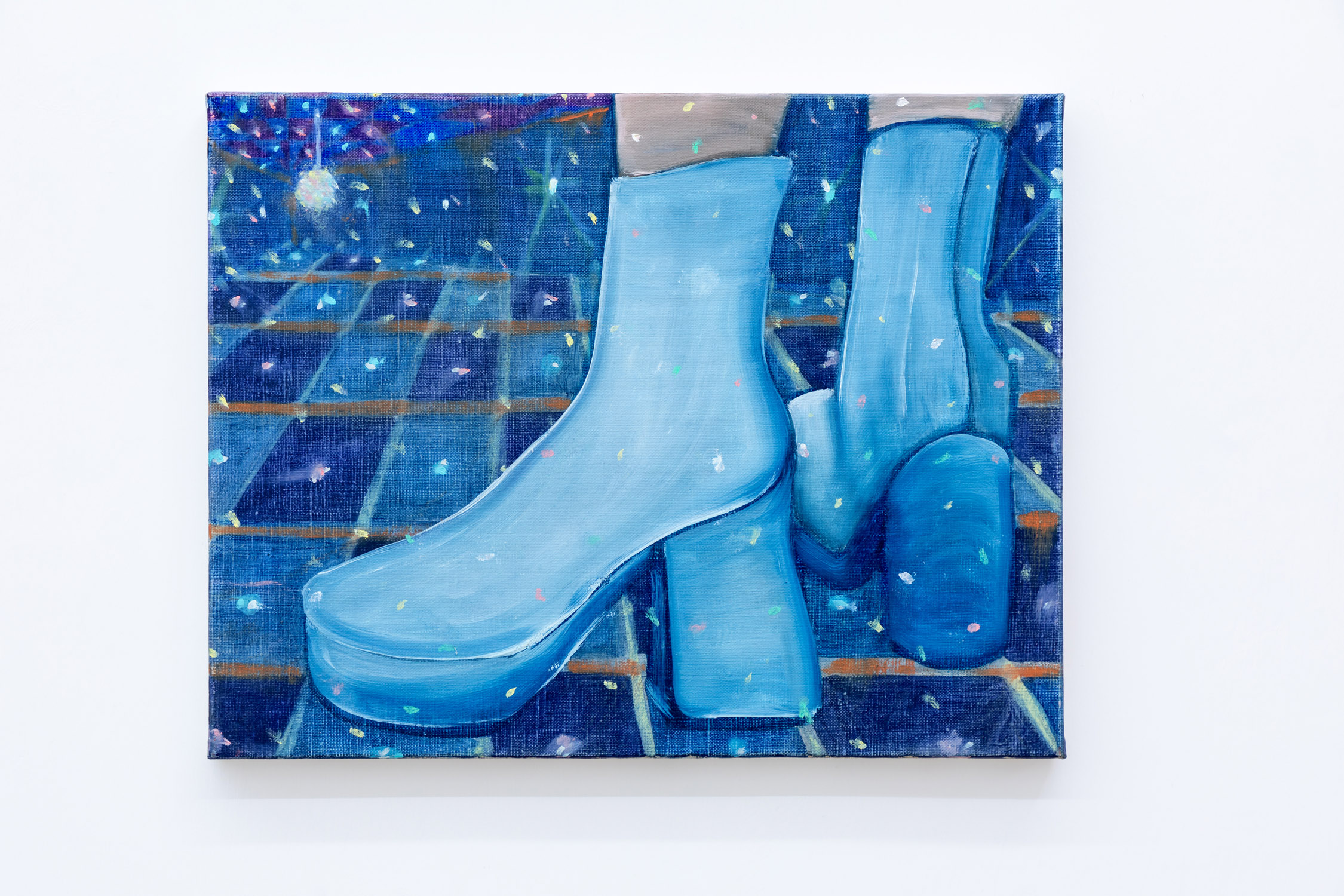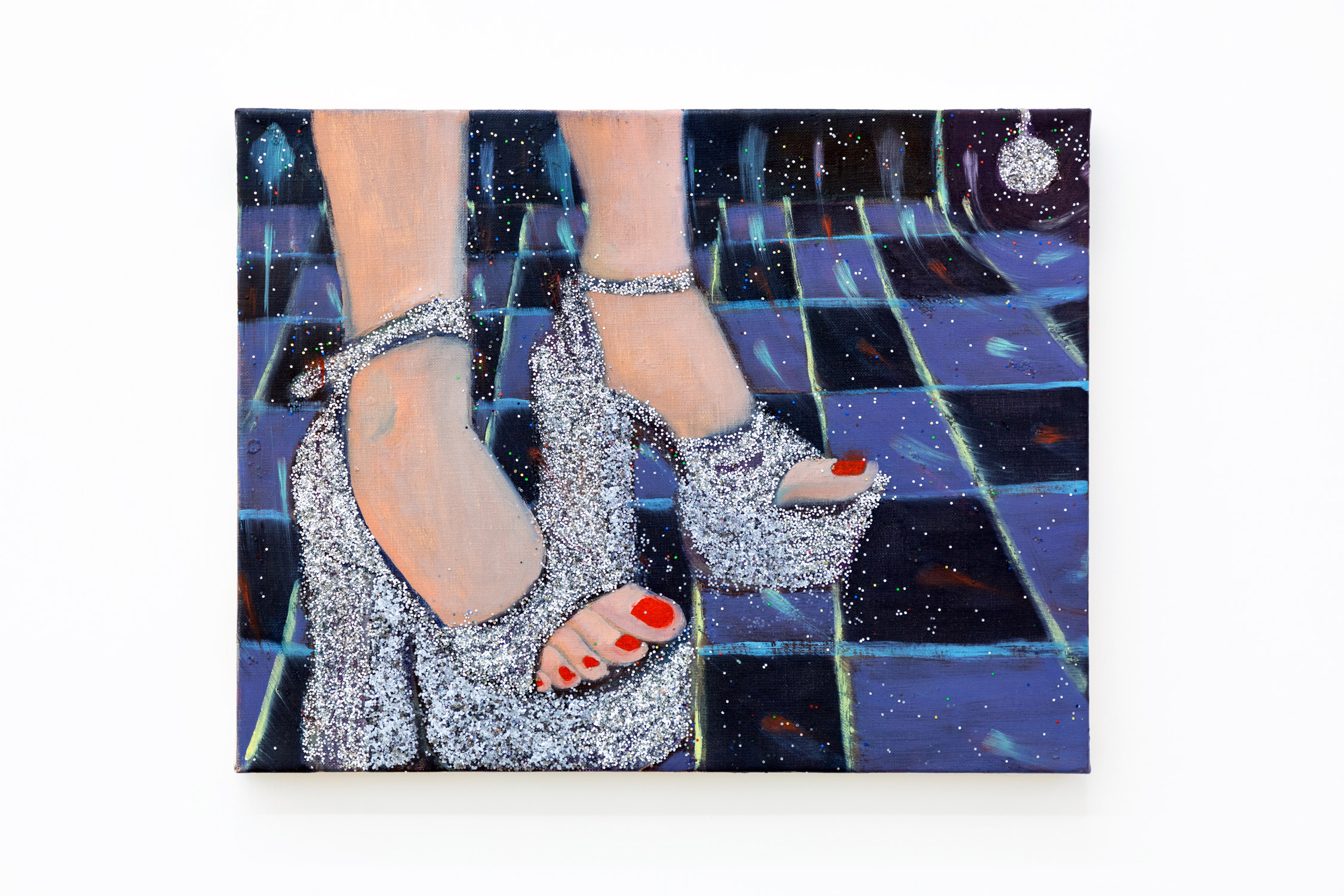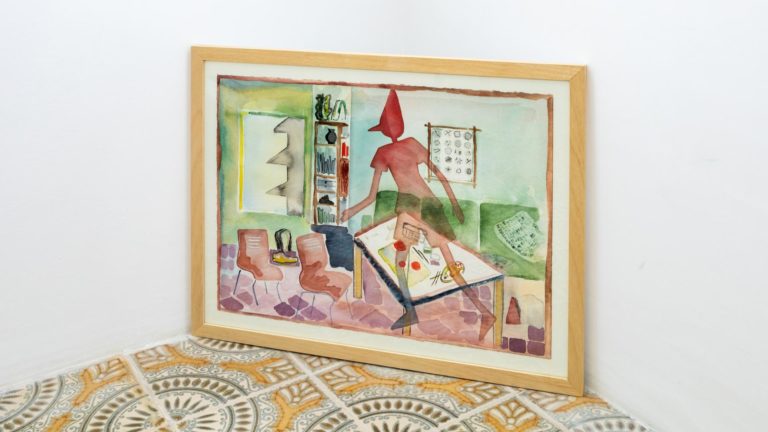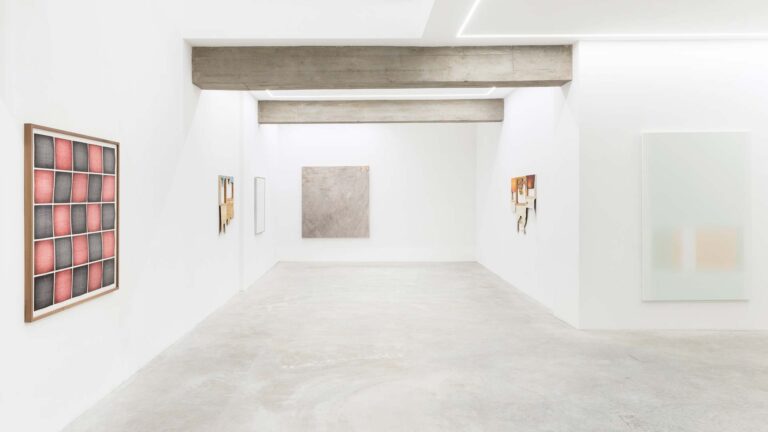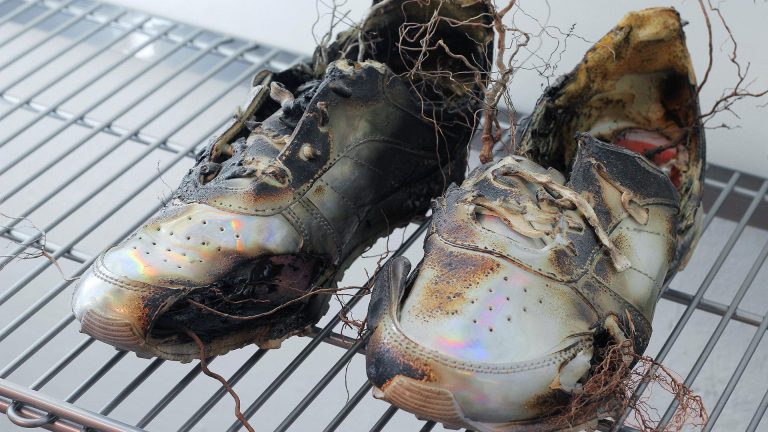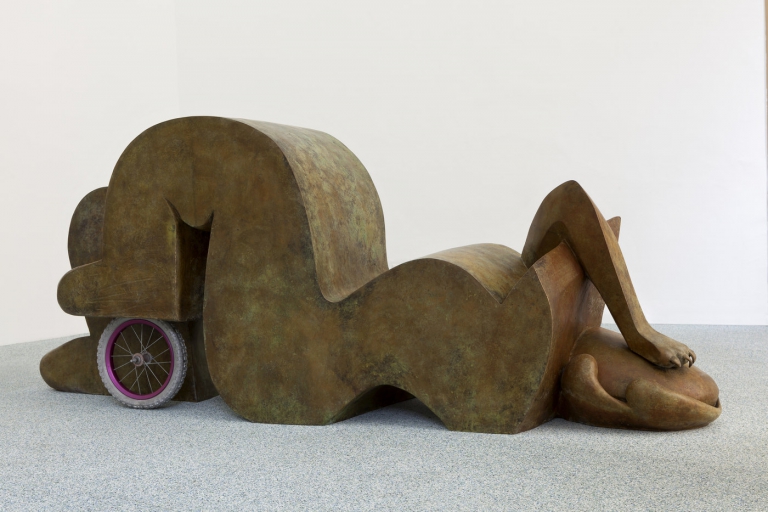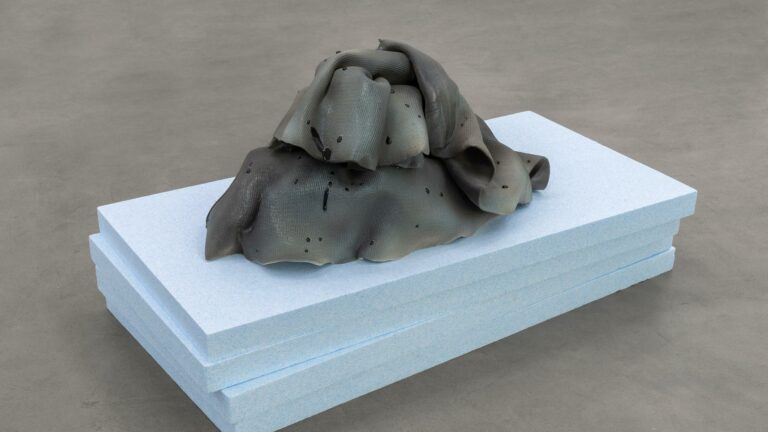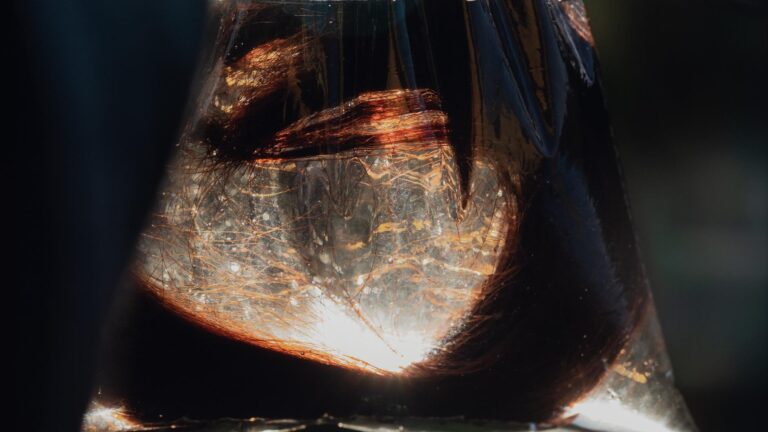A STARTING POINT FOR AN EXPLORATION by Tim Battelino
Made for dancing, to impress your conversation partner, for sports, to flirt, to take the trash out, to increase your height, to reveal your aspirations sometimes to the point of embarrassment… Maybe shoes are just shoes – or sometimes they become protagonists. In the words of Kyvèli Zoi, the series presented could be viewed as a romantic joke. A playful invitation to peek inside the lives of their beholders, whether from real life situations or imaginary ones. Shoes as a subject in art have been analyzed before. Heidegger famously dissected Van Gogh’s 1886 painting of worndown boots, imbuing them with vivid social commentary. Other philosophers (such as Shapiro and Derrida) couldn’t help themselves but to follow up and offer their own musings on the subject: what could be extrapolated from a seemingly simple subject that has been rendered an unusual importance through painting? In Zoi’s case, if the shoes are the immediate ‘attention grabbers’ in all their colorful forms and offer obvious associations as to their intended use, they also seem to be offering an invitation to take a closer look at the background of each scene. Van Gogh, Warhol, Guston, etc. have portrayed shoes as main characters, and they have been analyzed as such (perhaps to the point of exhaustion). Zoi’s shoes are merely a starting point for an exploration. The background becomes the main event. Are we on the streets of New York rushing? Or having an intimate conversation ‘en deux’ in a gallery setting? Why are there boots on a table, to make a drunk announcement or to sing the night away? Who are the boots in the spotlight talking to, or is it a performance? Is a dangerously close couple in a cropped scene embracing, whispering, or fighting? The intriguing part is the exploration of space, the setting of a scene. Making the assumptions becomes the game of the show, Zoi offering teasing snippets of the lively scenes without losing a certain magic of ambiguity. Perhaps each scene deserves some sort of musical accompaniment, a stylized odyssey through different genres – groovy disco for the glittery dance scene, heavy rebetiko for our table dancer, hip hop on the way to the subway etc. We might be left to playfully guess about the specifics, yet the exuberant celebration of colorful protagonists and their possible interactions make a common thread throughout the show and continue Zoi’s exploration of elevating the everyday into a cause worthy of everyone’s attention. Once we have had our share of gazing and peeking, what we are left with might be the vibrant ceramics set within the actual space – real, palpable reminders of the joy each scene on the walls seem to be radiating. Perhaps a savvy contemporary analysis in the venerable tradition of examining ‘the shoe’ as a subject should be made about those.
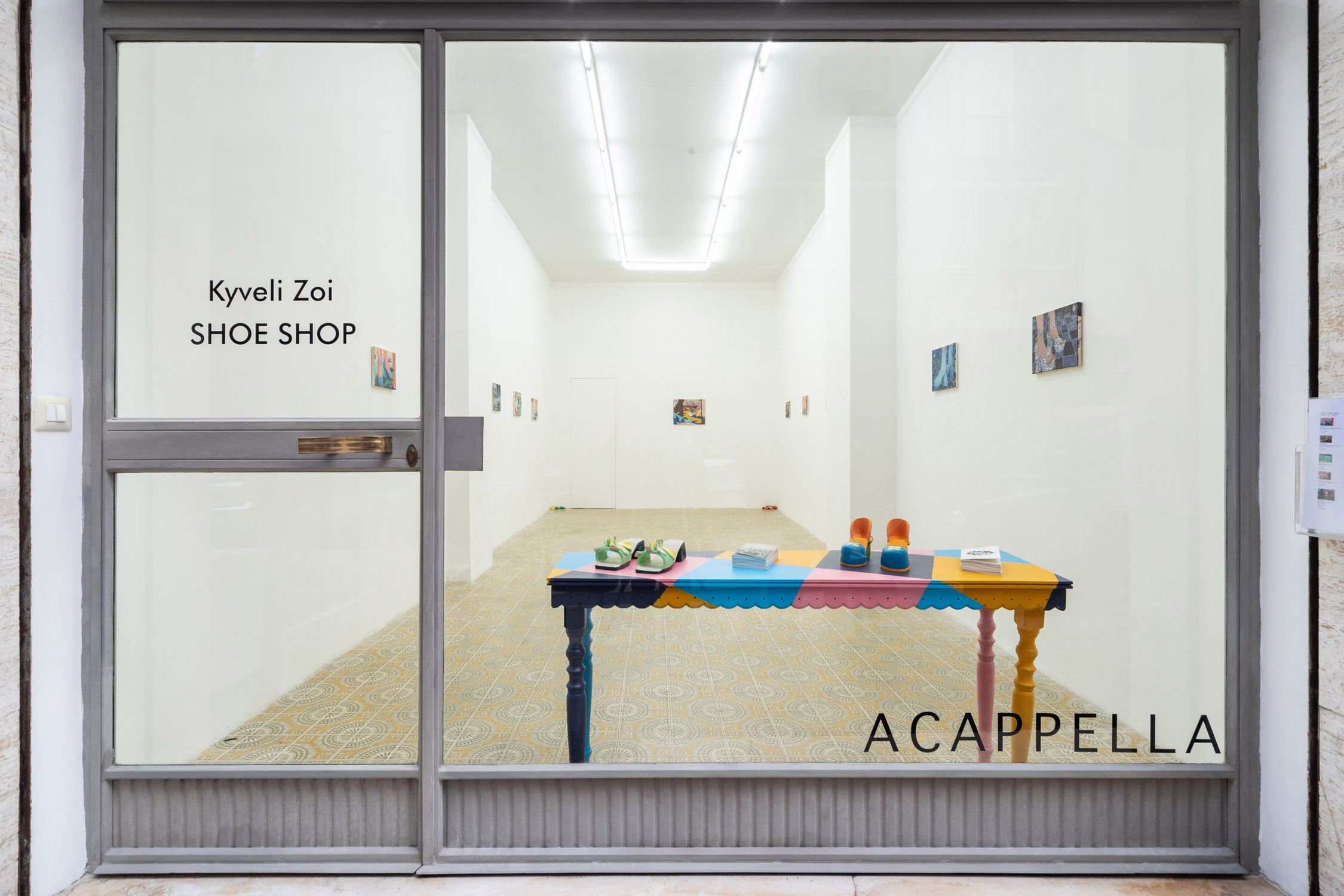

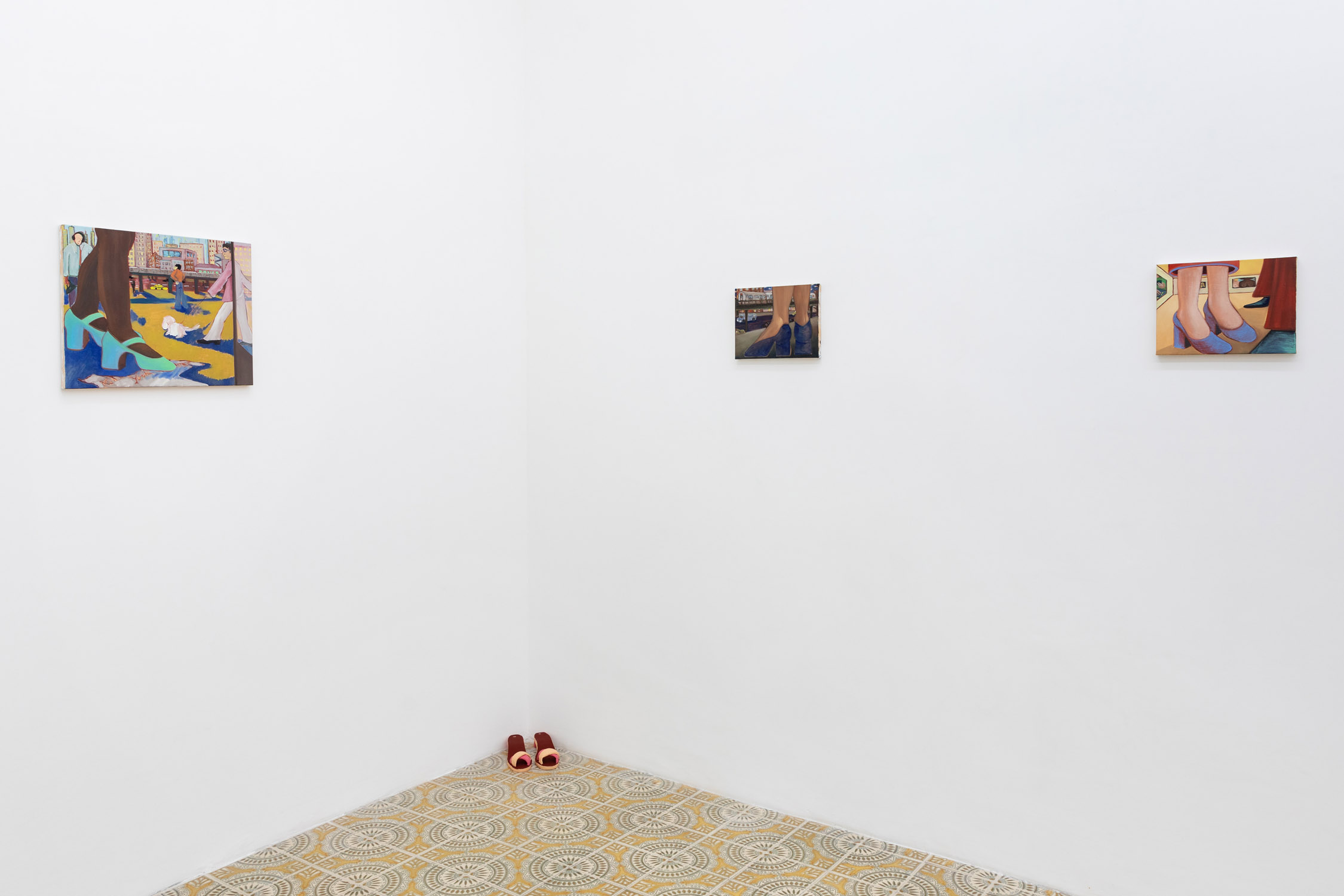
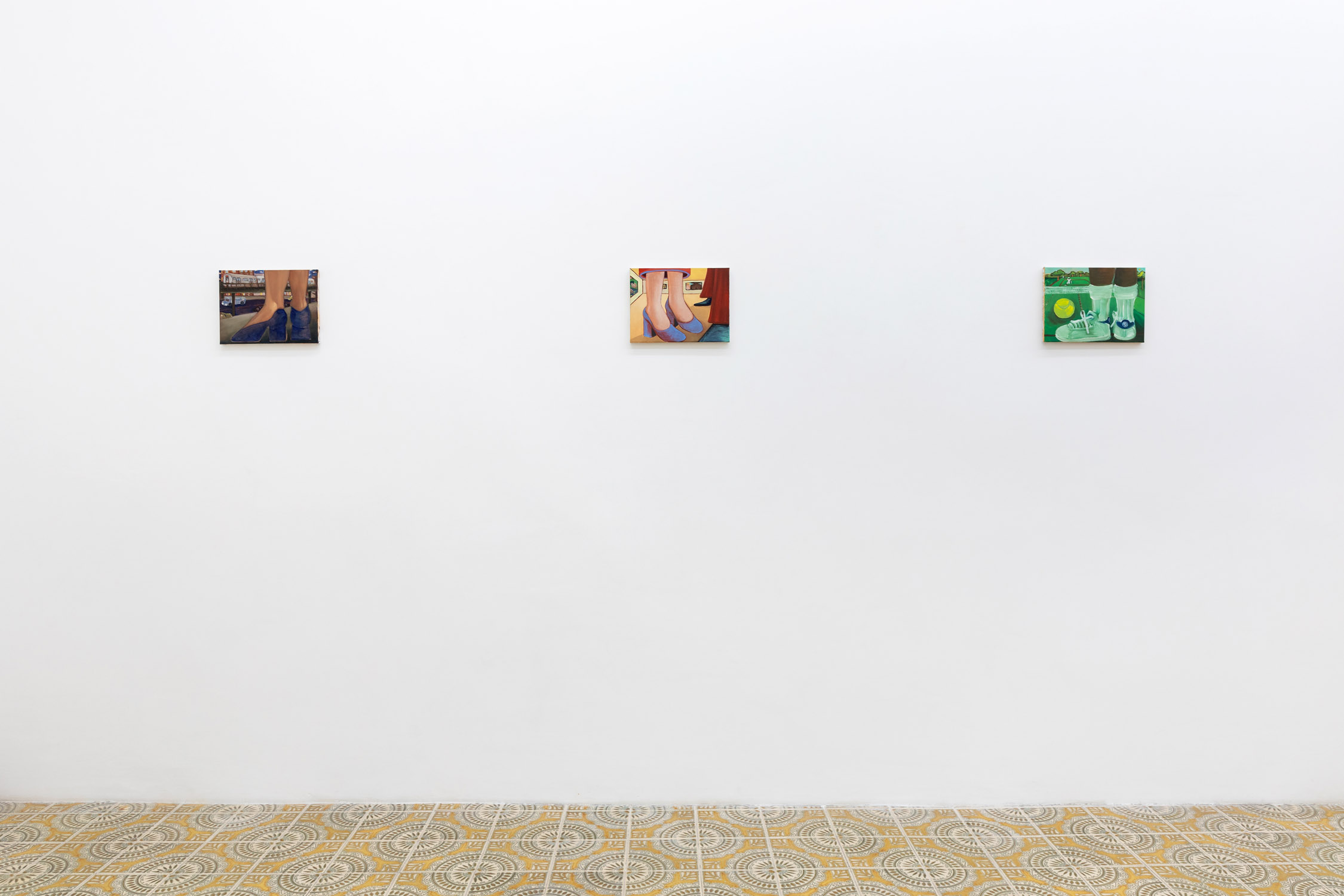
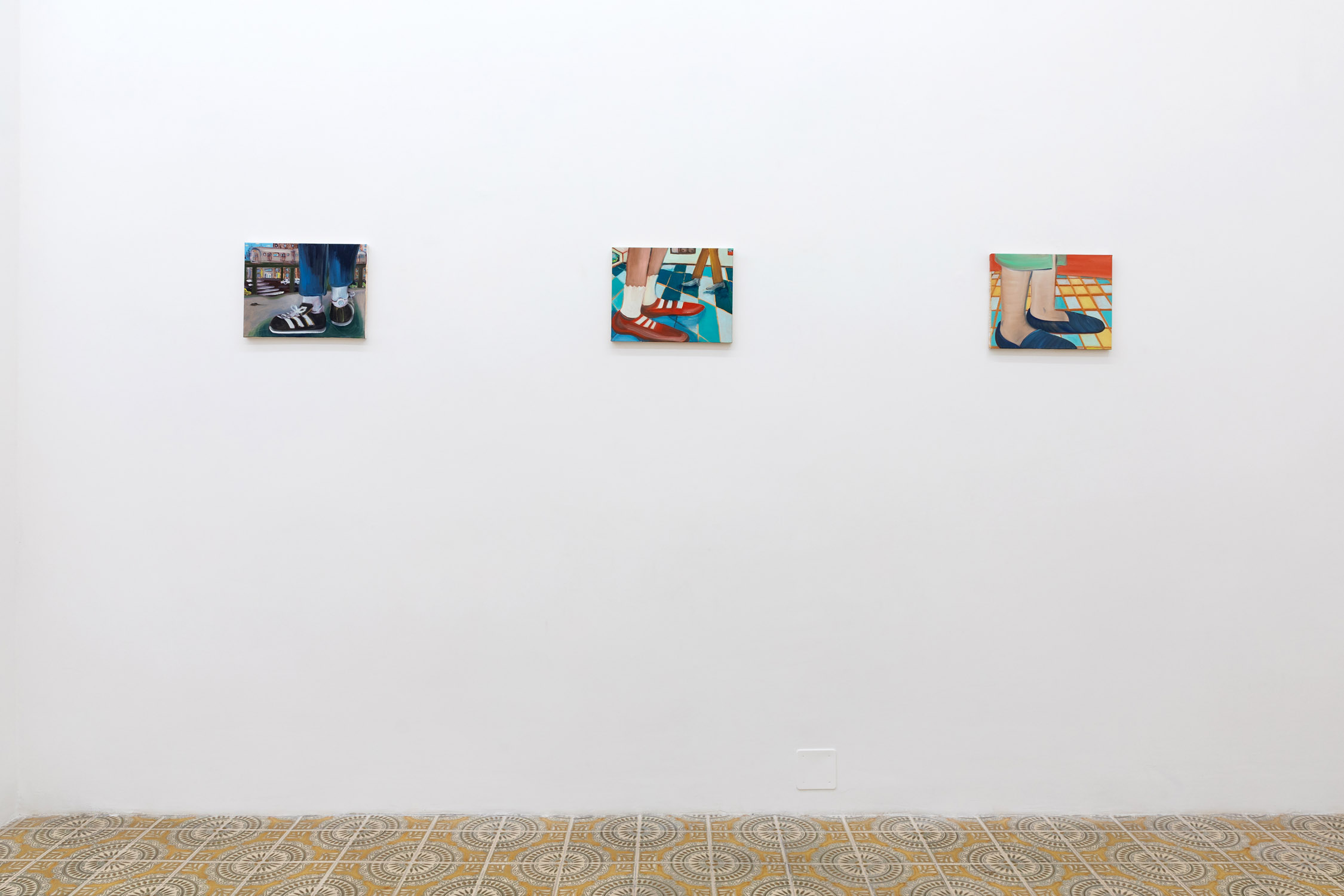



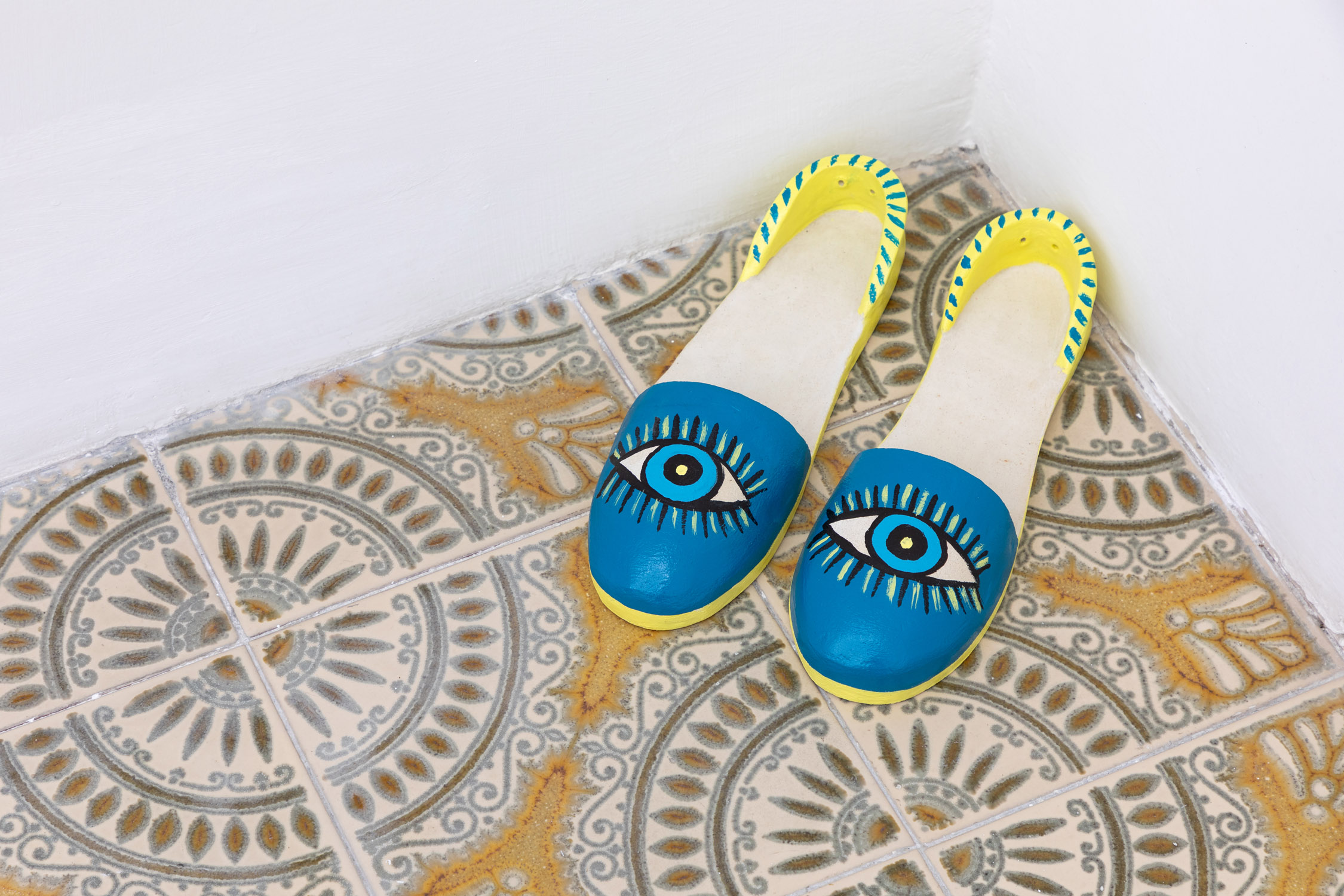


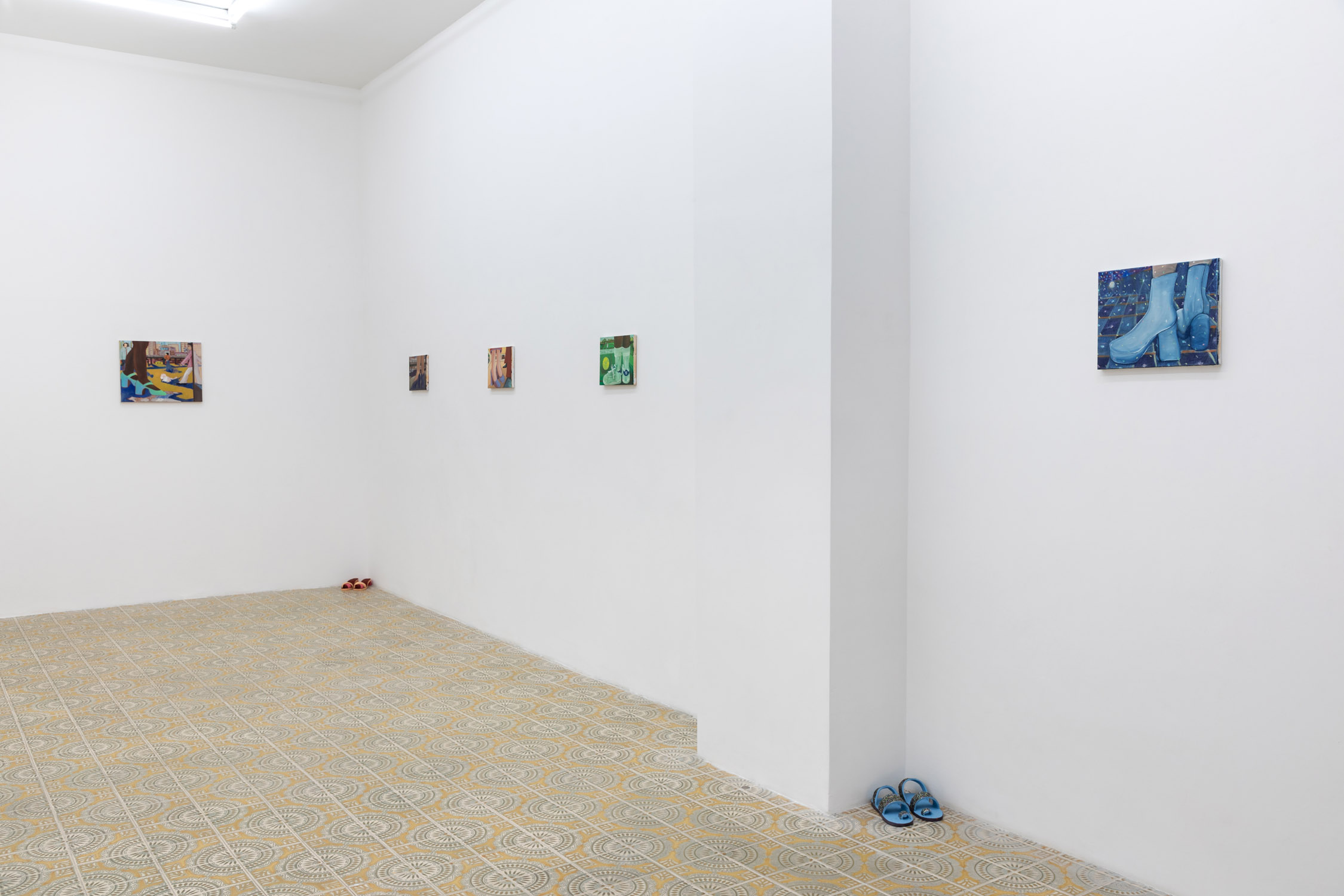
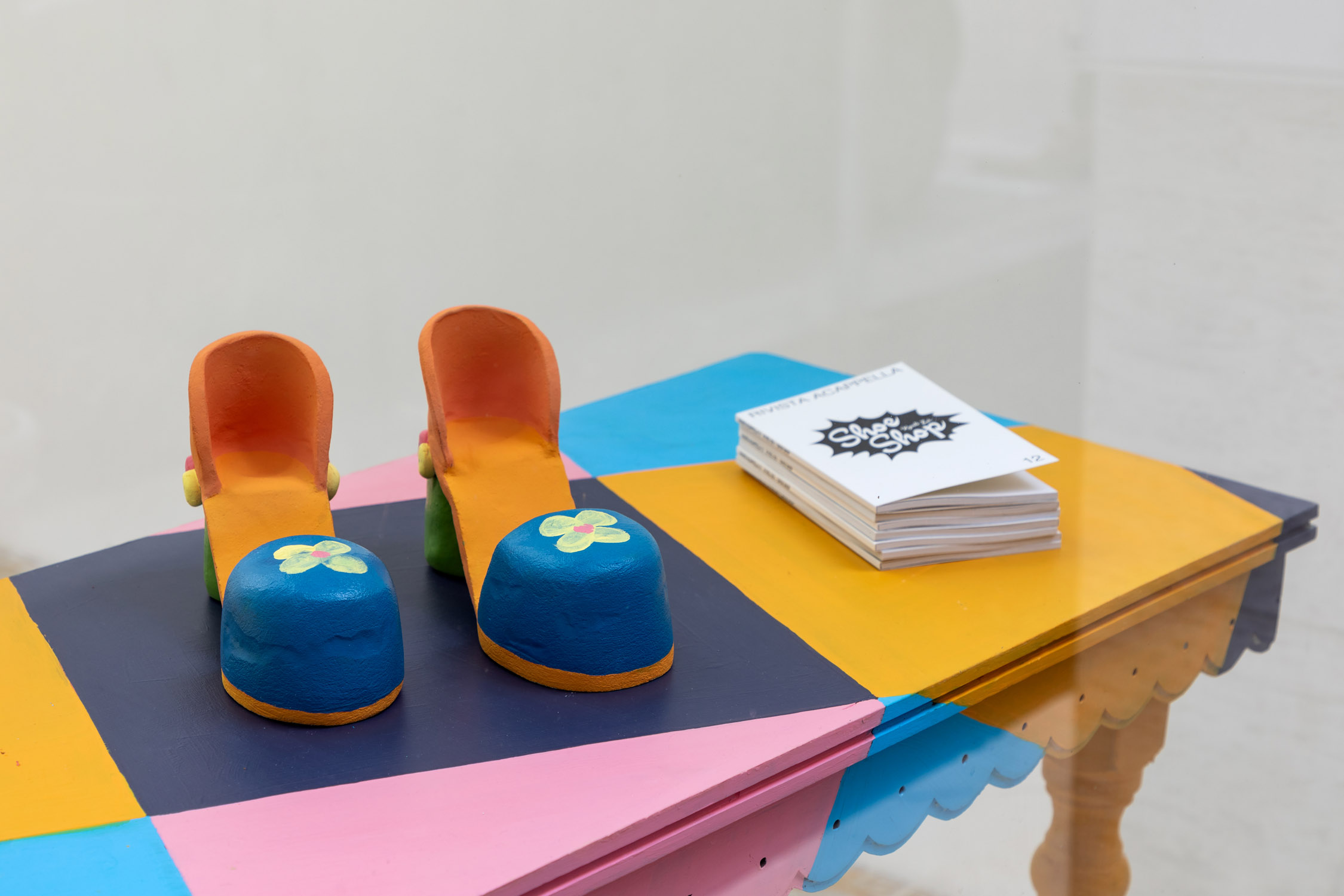

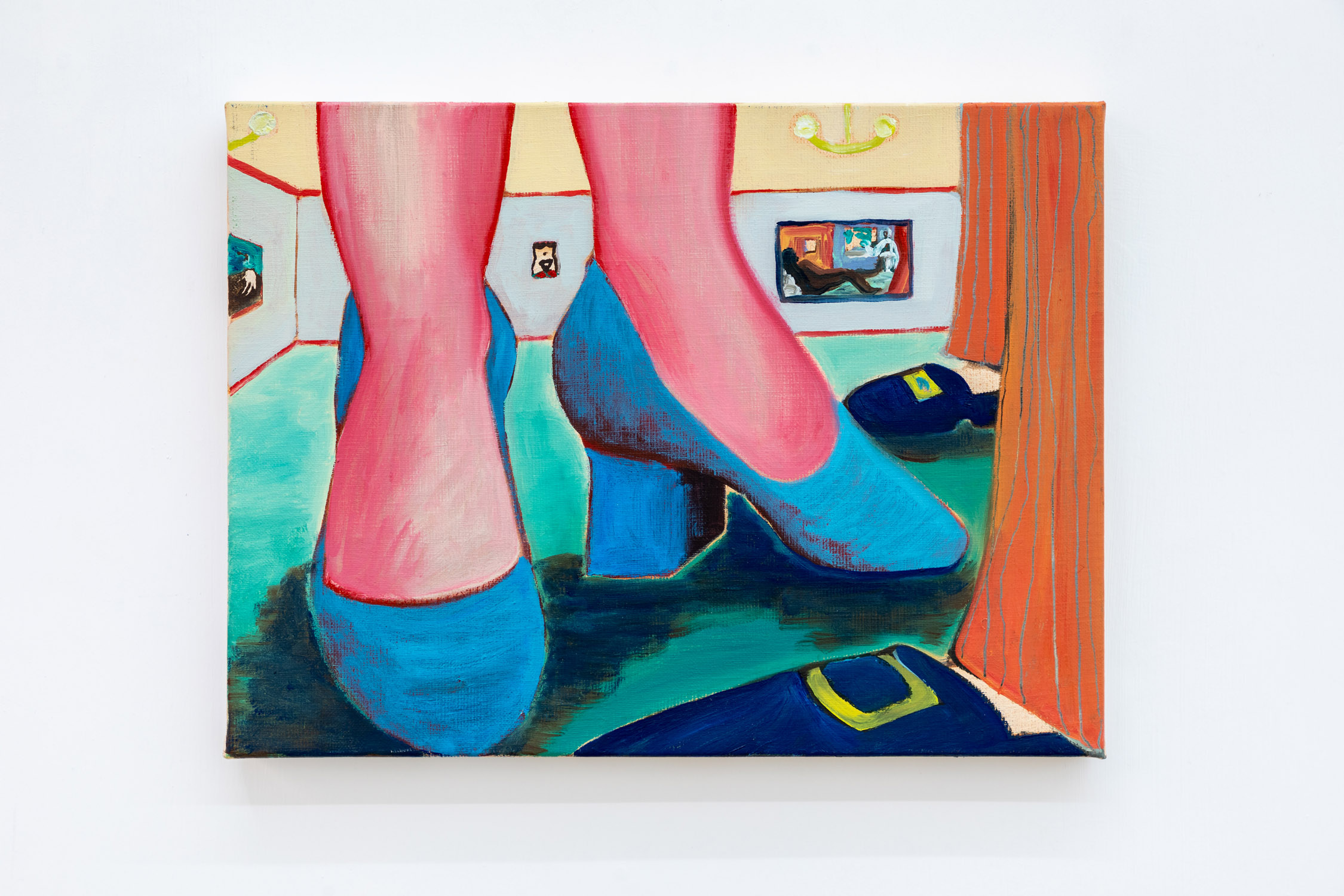
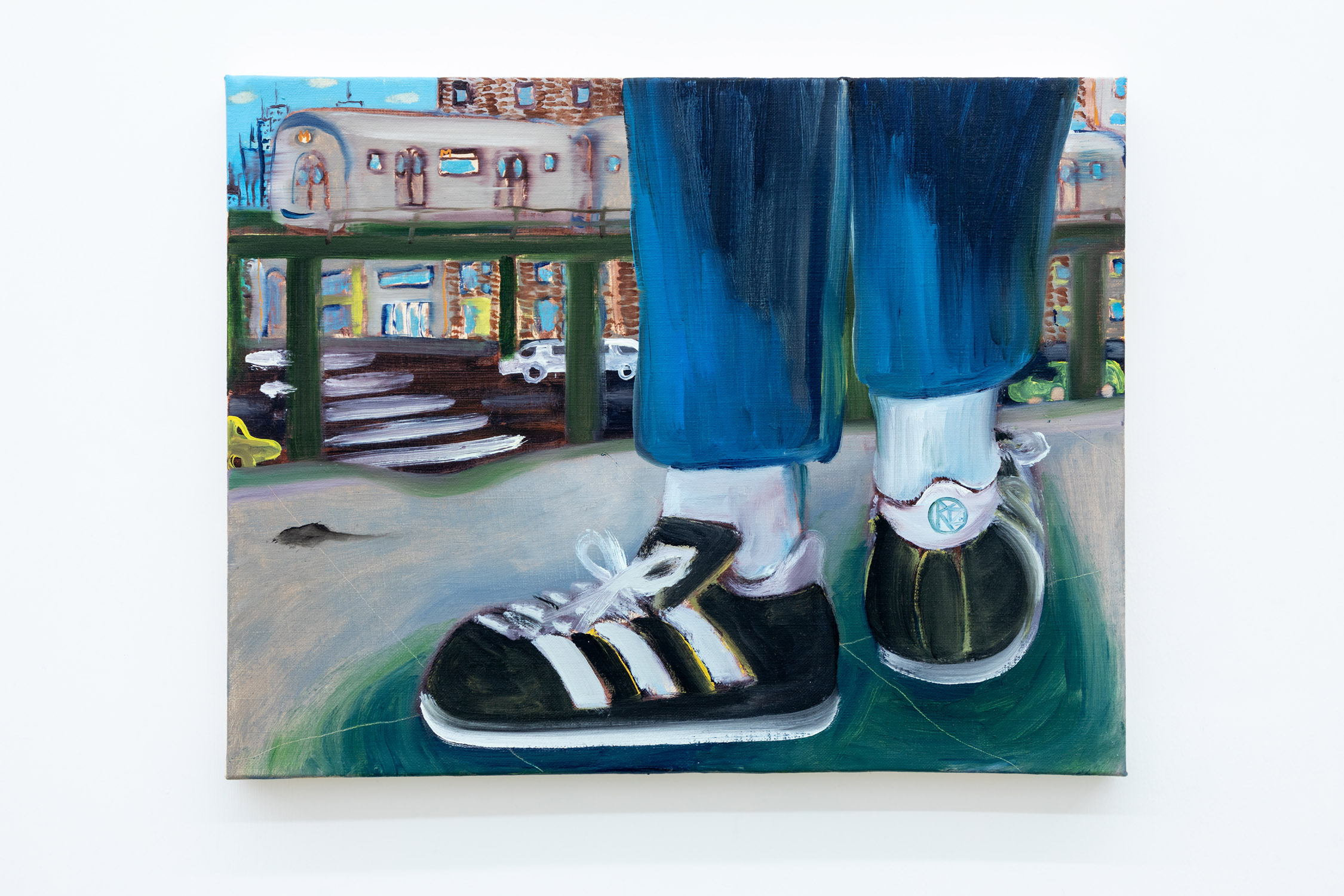
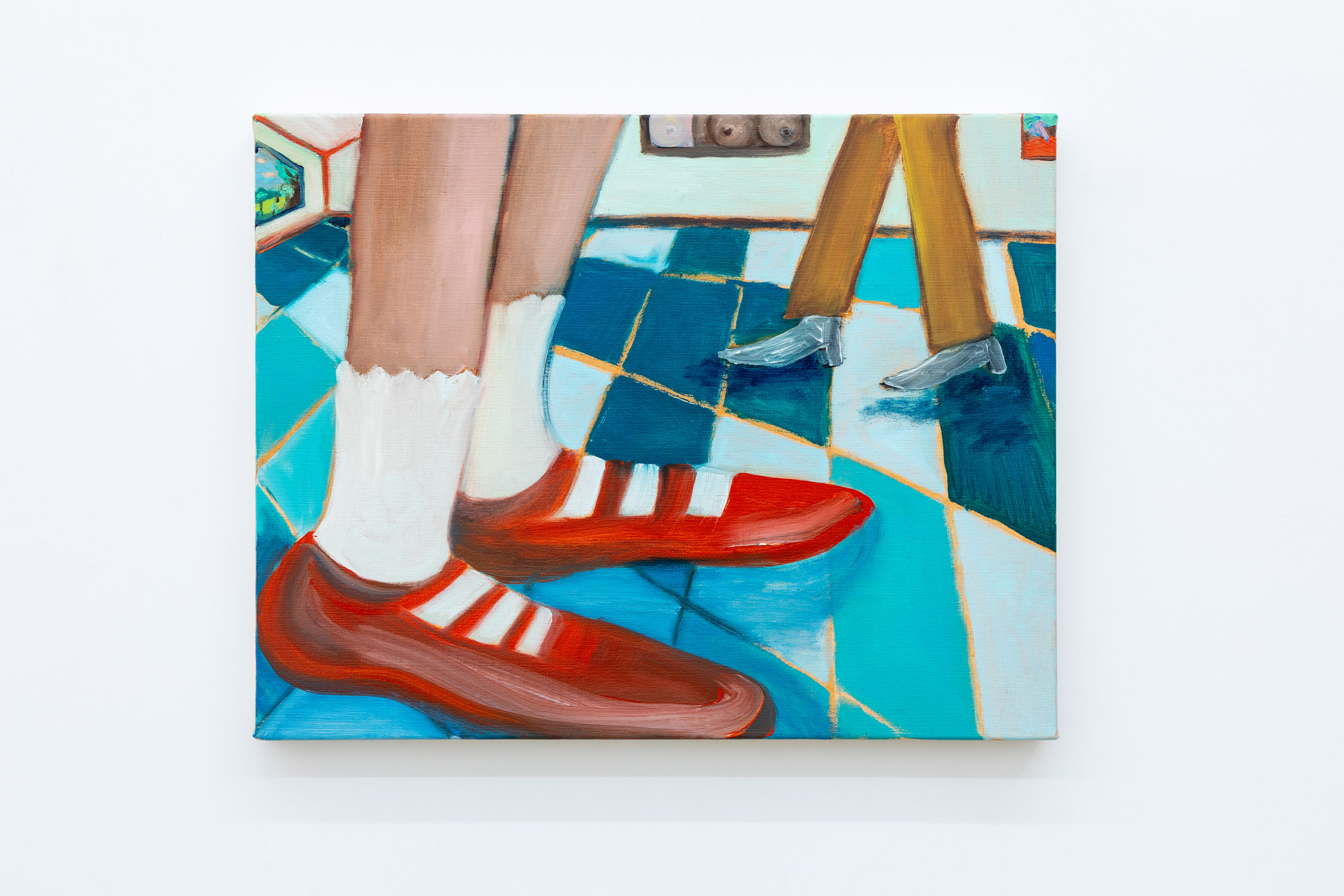
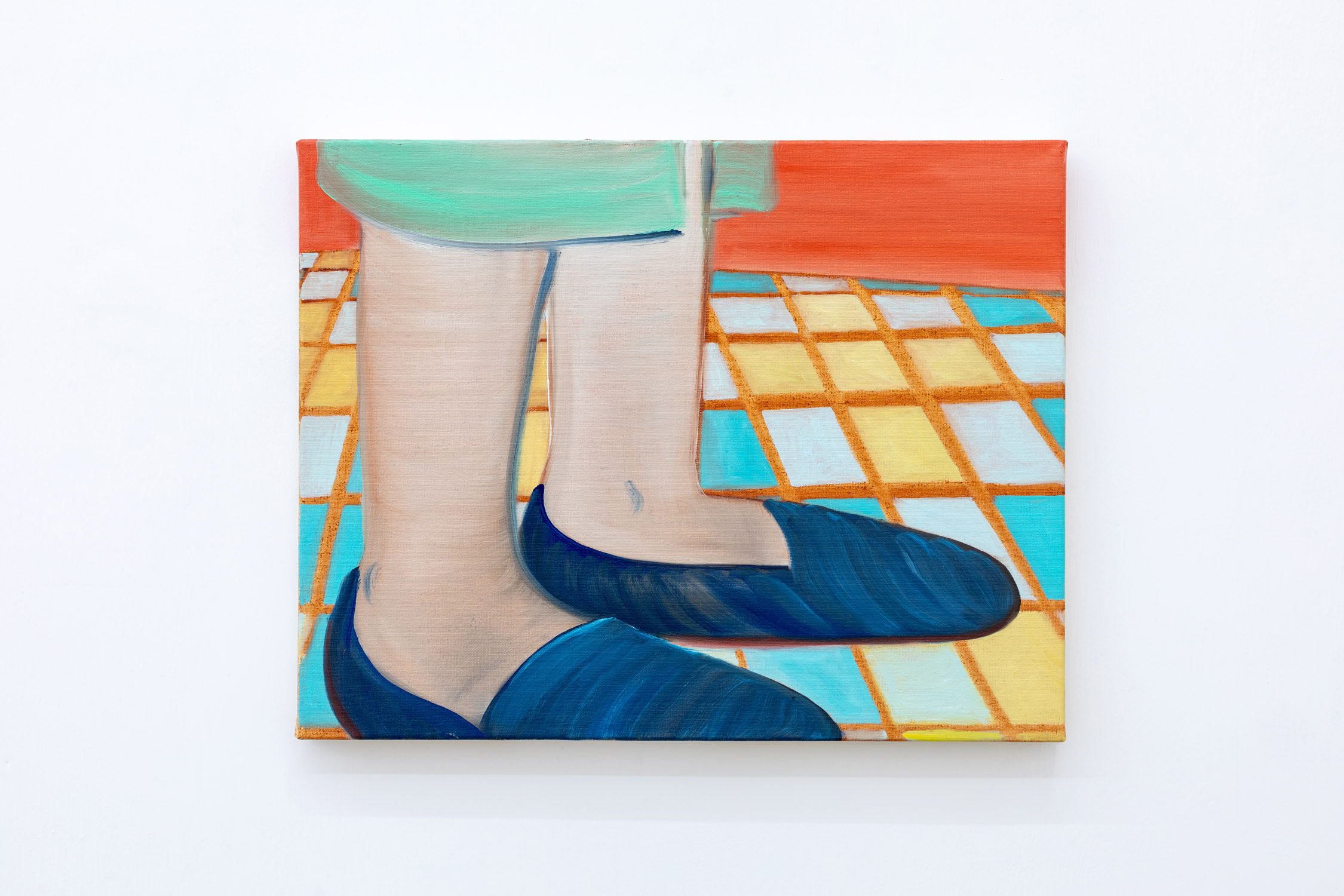

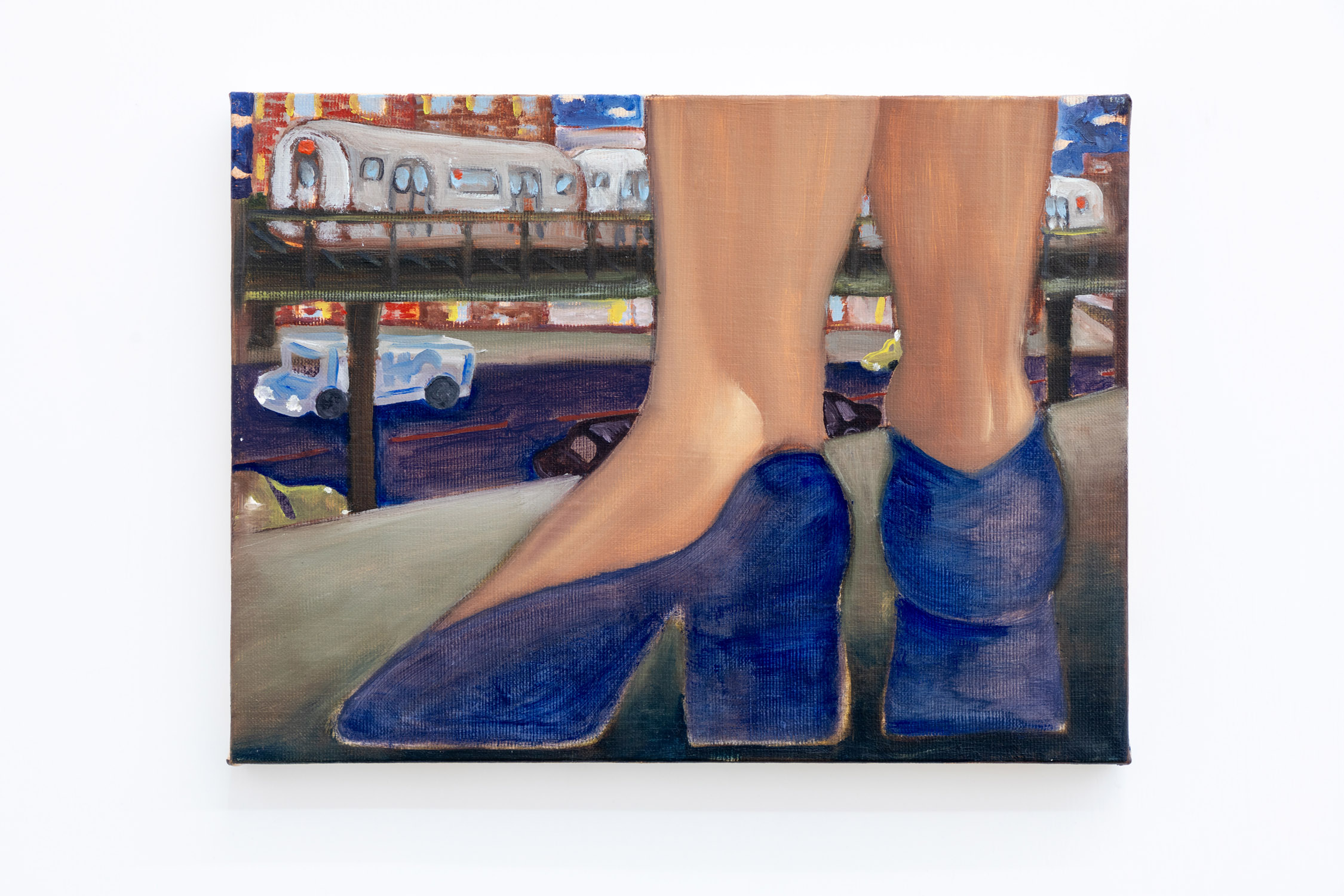
2024, Oil on linen 22 x 30 cm


